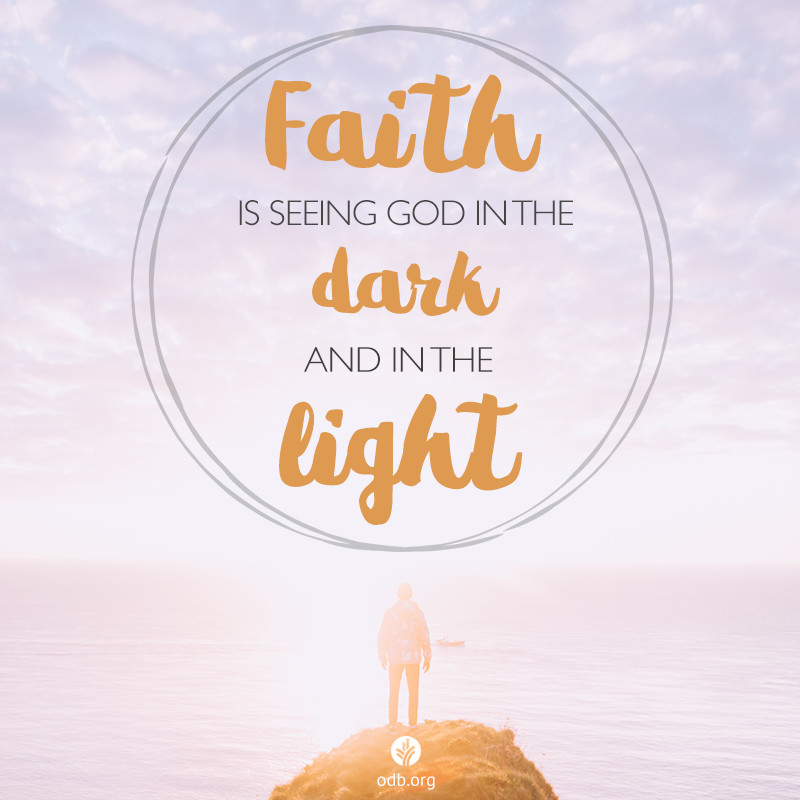
Fiery Trials
Fire can be one of the worst enemies of trees. But it can also be helpful. Experts say that small, frequent fires called “cool” fires clean the forest floor of dead leaves and branches but don’t destroy the trees. They leave behind ashes, which are perfect for seeds to grow in. Surprisingly, low-intensity fires are necessary for healthy growth of trees.
Similarly, trials—pictured as fire in the Bible—are necessary for our spiritual health and growth (1 Peter 1:7; 4:12). James wrote, “Consider it pure joy, my brothers and sisters, whenever you face trials of many kinds, because you know that the testing of your faith produces perseverance. Let perseverance finish its work so that you may be mature and complete, not lacking anything” (James 1:2-4).
It is in the season of trial that God’s purposes are often realized, for there the conditions are right for us to grow into spiritual maturity. This growth not only equips us for living, but it also enables us to more accurately reflect Jesus to a world that desperately needs Him.
In the hands of our Father, our trials can achieve His purposes for our good and for His honor. They can shape us into the likeness of His Son.

Connecting the Dots
In the 1880s French artist Georges Seurat introduced an art form known as pointillism. As the name suggests, Seurat used small dots of color, rather than brush strokes of blended pigments, to create an artistic image. Up close, his work looks like groupings of individual dots. Yet as the observer steps back, the human eye blends the dots into brightly colored portraits or landscapes.
The big picture of the Bible is similar. Up close, its complexity can leave us with the impression of dots on a canvas. As we read it, we might feel like Cleopas and his friend on the road to Emmaus. They couldn’t understand the tragic “dotlike” events of the Passover weekend. They had hoped that Jesus “was the one who was going to redeem Israel” (Luke 24:21), but they had just witnessed His death.
Suddenly a man they did not recognize was walking alongside them. After showing an interest in their conversation, He helped them connect the dots of the suffering and death of their long-awaited Messiah. Later, while eating a meal with them, Jesus let them recognize Him—and then He left as mysteriously as He came.
Was it the scarred dots of the nail wounds in His hands that caught their attention? We don’t know. What we do know is that when we connect the dots of Scripture and Jesus’s suffering (vv. 27, 44), we see a God who loves us more than we can imagine.

Worth the Calories?
I love egg roti prata, a popular pancake in my country of Singapore. So I was intrigued to read that a 125-pound (57 kg) person must run 5 miles (8 km) per hour for 30 minutes to burn 240 calories. That’s equivalent to only one egg roti prata.
Ever since I started working out in the gym, those numbers have taken on a new significance for me. I find myself asking: Is this food worth the calories?
While it is wise to watch our food consumption, it is even more important to watch our media consumption. Research shows that what we see can stay in our minds for a long time and influence our behavior. It has a “clingy effect,” sticking to us like that stubborn fat we find so hard to lose.
With the wide variety of media content surrounding us today, we need to be discerning consumers. That doesn’t mean we read only Christian literature or watch only faith-related movies, but we are careful about what we allow our eyes to see. We might ask ourselves: Is this worth my time?
In Philippians 4:8, the apostle Paul tells us in essence, “Feed your eyes and minds on things that are true, noble, just, pure, lovely, of good report, virtuous and praiseworthy.” This is a “diet” worthy of what Christ has done and is doing in us.

Making Preparations
As we viewed my father-in-law’s body in his casket at the funeral home, one of his sons took his dad’s hammer and tucked it alongside his folded hands. Years later, when my mother-in-law died, one of the children slipped a set of knitting needles under her fingers. Those sweet gestures brought comfort to us as we remembered how often they had used those tools during their lives.
Of course, we knew that they wouldn’t actually need those items in eternity. We had no illusions, as the ancient Egyptians did, that tools or money or weapons buried with someone would better prepare them for the next life. You can’t take it with you! (Ps. 49:16-17; 1 Tim. 6:7).
But some preparation for eternity had been necessary for my in-laws. That preparation had come years before when they trusted Jesus as their Savior.
Planning for the life to come can’t begin at the time of our death. Each of us must prepare our heart by accepting the gift of salvation made possible by Jesus’ sacrifice on the cross.
At the same time, God has made preparations as well: “If I go and prepare a place for you, I will come back and take you to be with me that you also may be where I am” (John 14:3). He has promised to prepare a place for us to spend eternity with Him.

